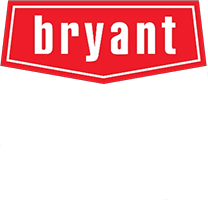Creating the Perfect Indoor Environment, Year-Round
Living in Boise means experiencing the full spectrum of seasons—from hot, dry summers to crisp, cold winters. While we love the variety, it presents a unique challenge for maintaining a consistently comfortable and healthy home. Your heating and cooling system works hard year-round, significantly impacting your family’s well-being and your monthly energy bills. Achieving the perfect balance of comfort and efficiency isn’t about constantly adjusting the thermostat; it’s about having a smart, well-maintained system tailored to our local climate.
This guide is for homeowners who value long-term solutions and want to create a healthier, more energy-efficient sanctuary. We’ll explore modern HVAC technologies and practical strategies that put you in control of your home’s climate without compromising on comfort or air quality.
Modern Solutions for Year-Round Comfort
Today’s HVAC technology offers incredible advancements in both performance and efficiency. For Boise residents, moving beyond traditional systems can lead to significant improvements in comfort and cost savings. Two of the most impactful upgrades are modern heat pumps and zoned HVAC systems.
High-Efficiency Heat Pumps: The All-in-One Solution
Forget what you might have heard about older models. Modern heat pumps are highly efficient and perfectly suited for Idaho’s climate. Instead of creating heat, they cleverly transfer it. In the summer, a heat pump moves heat from inside your home to the outdoors, acting just like a powerful air conditioner. In the winter, it reverses the process, extracting heat from the outside air (even when it’s cold) and moving it inside.
This process is far more energy-efficient than traditional furnaces that burn fuel to generate heat. The result is a single system that provides reliable heating and cooling, often with substantial savings on your utility bills.
Zoned HVAC Systems: Personalized Comfort in Every Room
Does your family argue over the thermostat? Is the upstairs always warmer than the downstairs? A zoned HVAC system solves these common problems by dividing your home into distinct areas, or “zones.” Each zone gets its own thermostat, allowing you to set different temperatures for different parts of the house.
By using a system of automated dampers in your ductwork, you can heat or cool only the areas you’re using. This means you stop wasting energy on empty rooms and give everyone in the family the ability to enjoy their own ideal temperature. It’s the ultimate upgrade for customized comfort and peak energy efficiency.
Beyond Temperature: Elevating Your Indoor Air Quality
True home comfort is about more than just the temperature—it’s about the quality of the air you breathe. Boise’s dry climate can lead to uncomfortably low humidity levels inside, especially during winter. This can cause dry skin, irritated sinuses, and static electricity, and can even damage wood floors and furniture.
A whole-house humidifier integrates directly with your HVAC system to add the perfect amount of moisture to the air. Unlike portable units, it requires minimal maintenance and provides consistent, balanced humidity throughout your entire home. This simple addition can make your home feel warmer at lower temperatures, improve respiratory health, and protect your home’s interior.
| Feature | Traditional System | High-Efficiency Heat Pump | Zoned System |
|---|---|---|---|
| Control | Single thermostat for entire home | Single thermostat for entire home | Multiple thermostats for individual rooms/areas |
| Energy Use | Standard efficiency; heats/cools entire house | High efficiency; transfers heat instead of creating it | Highest efficiency; heats/cools only occupied zones |
| Comfort | Prone to hot/cold spots | Consistent, even temperature | Customized temperature for each zone |
Did You Know?
- Heating and cooling account for nearly half of the energy usage in a typical U.S. home. Upgrading to a high-efficiency system can reduce that consumption by 20-50%.
- Properly maintained HVAC systems can last up to 50% longer than neglected ones. An annual tune-up is one of the best investments you can make.
- Smart thermostats can learn your family’s schedule and adjust temperatures automatically, saving you an average of 10-15% on your heating and cooling bills.
5 Practical Tips for Lowering Your Energy Bills
1. Schedule Regular Maintenance
The single most important step you can take is scheduling annual professional tune-ups. A technician can clean, inspect, and optimize your system for peak performance, catching small issues before they become expensive breakdowns. Explore our preventative maintenance plans to make this process simple and cost-effective.
2. Check Your Air Filters Monthly
A clogged air filter forces your system to work harder, consuming more energy and reducing airflow. Check your filter monthly and replace it when it looks dirty, or at least every three months.
3. Seal Air Leaks
Gaps around windows, doors, and ductwork allow your conditioned air to escape. Use weatherstripping and caulk to seal these leaks and keep the air you’re paying to heat or cool inside your home.
4. Use Your Thermostat Wisely
Set your thermostat a few degrees higher in the summer and lower in the winter when you’re away from home or sleeping. A programmable or smart thermostat can automate this for you, maximizing savings without sacrificing comfort.
5. Consider Strategic Upgrades
If your system is over 10-15 years old, it may be time to consider a modern, energy-efficient replacement. An expert in HVAC installation can help you choose a system that’s properly sized for your Boise home, ensuring optimal performance and long-term savings.
Your Trusted HVAC Partner in Boise and the Treasure Valley
At 7th Element Heating and Cooling, we understand the unique demands of our local climate. From Meridian to Nampa and across the Treasure Valley, our licensed, bonded, and insured team is committed to providing honest advice and superior service. We focus on long-term value and personalized solutions that ensure your home is a healthy, comfortable, and efficient refuge for your family.
Ready to enhance your home’s comfort and efficiency?
Frequently Asked Questions
How often should I service my HVAC system in Idaho?
We recommend servicing your air conditioner in the spring and your furnace in the fall. This twice-yearly schedule ensures each component is ready for its peak season, promoting efficiency and preventing unexpected breakdowns.
Are heat pumps effective during a Boise winter?
Absolutely. Modern cold-climate heat pumps are designed to operate efficiently even when temperatures drop well below freezing. They are an excellent and energy-saving heating solution for the Treasure Valley climate.
What are the signs I need to replace my HVAC system?
Common signs include the system being over 15 years old, rising energy bills, frequent and costly repairs, strange noises, and difficulty maintaining a consistent temperature. An expert consultation can help determine if repair or replacement is the best option.
How much can I save with an energy-efficient HVAC system?
Savings vary based on your home’s insulation, the age of your old system, and your usage habits. However, homeowners can often save 20% or more on their annual heating and cooling costs by upgrading to a new high-efficiency model, with some systems offering even greater savings.
Does a zoned system work with my existing ductwork?
In most cases, yes. Zoned systems can be retrofitted into existing ductwork by installing electronically controlled dampers. A professional assessment is the best way to determine compatibility with your specific setup.
Glossary of Terms
SEER (Seasonal Energy Efficiency Ratio)
A rating that measures the cooling efficiency of an air conditioner or heat pump. The higher the SEER number, the more energy-efficient the unit is.
HSPF (Heating Seasonal Performance Factor)
A rating that measures the heating efficiency of a heat pump. Similar to SEER, a higher HSPF rating indicates greater energy efficiency.
Heat Pump
A versatile HVAC system that provides both heating and cooling by transferring heat between your house and the outside air.
Zoning
An HVAC setup that uses dampers in the ductwork to control airflow to specific areas (zones) of a home independently, allowing for different temperature settings in each zone.

